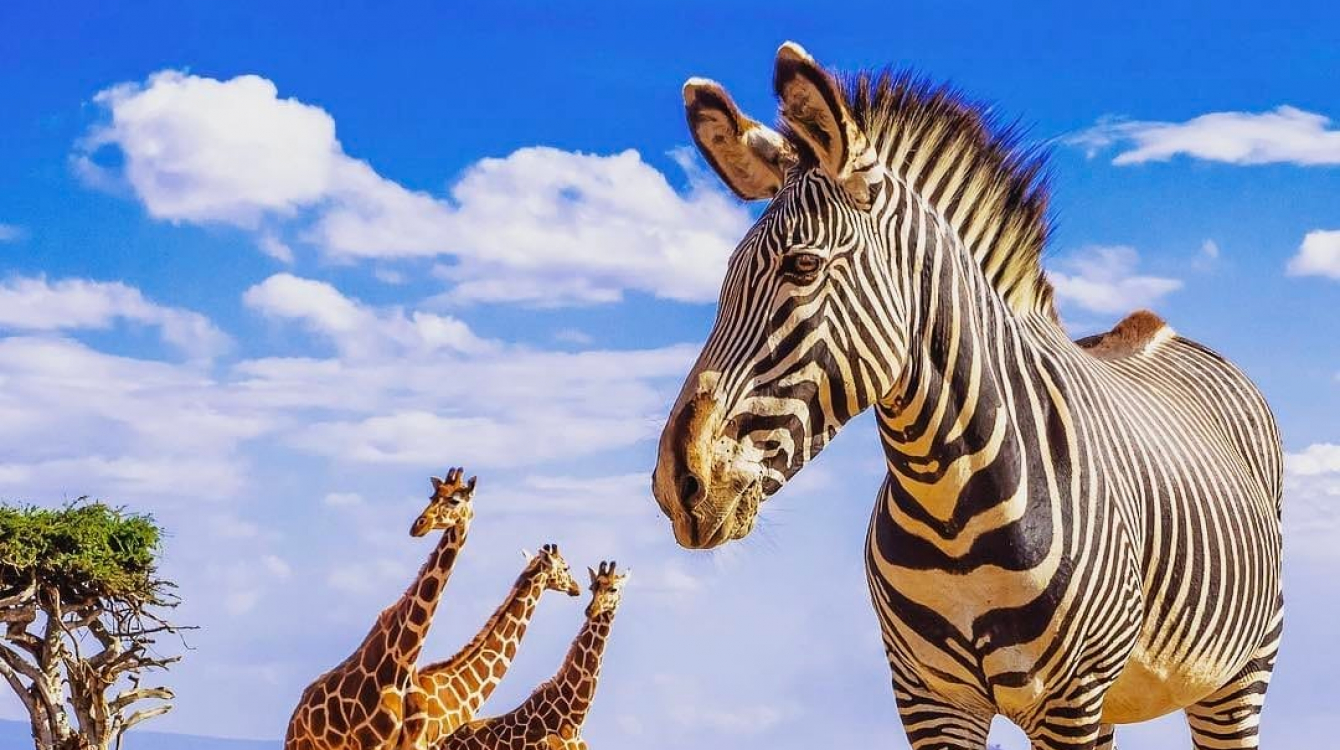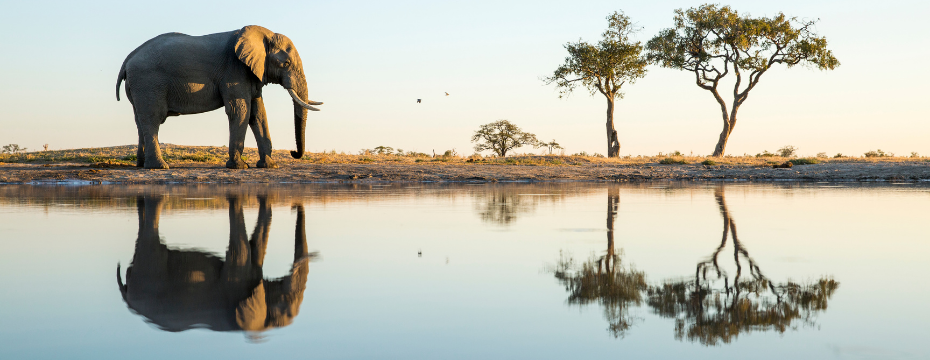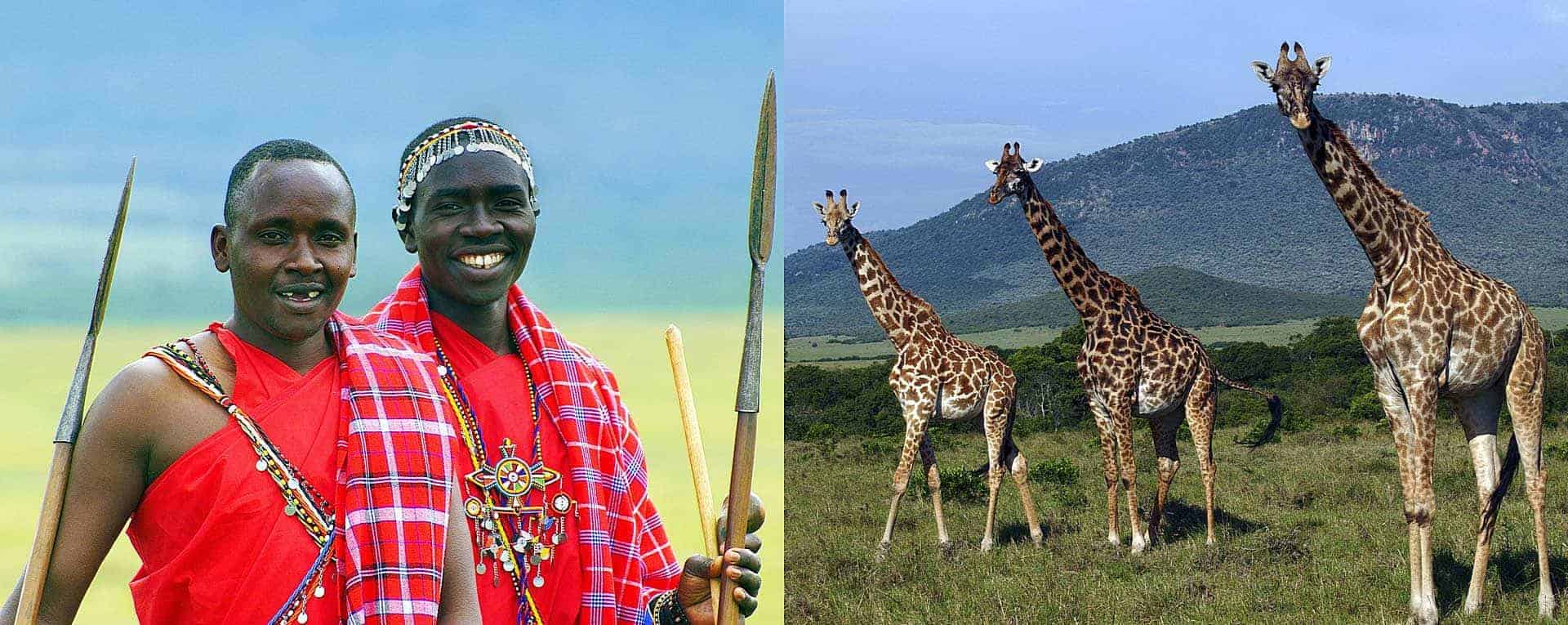With endless desert dunes that sprawl across the Sahara to the abundant wildlife in the Serengeti, Africa abounds with natural beauty and life. Get yourself onto the continent, and you are at once caught in a weave of inheritance traditions woven through time. Africa is Beautiful (Destimi ya Rai) Africa contains more than a million cultures with their own customs, languages and way of life.
The continent of Africa possesses an incredibly diverse mix with over 3,000 distinct ethnic tribes and more than two thousand different languages. The fact that such a cultural richness and diversity still exists is admittedly due to the resilience of the African people, who have endured centuries of colonization, war, struggle. While the people of Africa are struggling, they have somehow kept their beautiful cultural heritage alive, passing on generations old traditions and practices.
From the nomadic pastoralists of North Africa to resident citizens in Johannesburg, every corner of this hotbed is a melting pot with different forces drawn into and spun around its larger tapestry. But, nevertheless somehow there is an underlying sense of common purpose and mancingduit destiny that unites the peoples of Africa. From the ancestral spirits expected and honoured, to family relationships woven so deep in community and through oral storytelling at least one common thread running throughout these diverse cultures is that they seem somewhat connected.
Traditional Music and Dance in Africa
At the core of African culture is the rich and vibrant tradition of music and dance. The musical genre is varied from the rhythmic beats of the djembe drum to the soulful melodys in the kora. African music and dance are testaments of the creativity and ingenuity of its people. The most iconic African music form that actually defines African music is drumming.
The drumming tradition among Africans is age-old as they still use drums during their community gatherings – “drummers across the continent gather in communal settings, creating intricate polyrhythms that seem to pulse with the energy of the earth”. The most widely known drum is the djembe, an hourglass-shaped drum hand-carved from single a cylinder of wood produces deep and resonant tones. Besides the drum, other African drums produce a variety of different tones and rhythms for example tam-tam drum.
Apart from drum, there are other musical instruments that are used by Africans to play music. These musical instruments include stringed, keyed, and wind musical instruments for example kora. Commonly used stringed musical instruments are the harp and the lute; Other types of strings originated in Africa are the piano and clavichord. In the end, there are many different musical instruments that are used in Africa.
These musical instruments have different traditional cultural purposes and can only be distinguished by the culture of an individual group. The musical dances in Africa are defined in an African village. It is a communal dance where the community comes together for entertainment, solidarity, and politics. The dances are mainly politics because its main purpose is entertainment.

African Cuisine and Culinary Traditions
Like the continent itself, African cuisine which has a vast array of flavours and influences is colourful too. With spicy stews from North Africa to grilled meats and fermented porridges in the sub-Saharan region, there are plenty of flavors throughout Africa which represent a sensory extravaganza for your palate.
Kernels of millet, sorghum and cassava form the nucleus of African cuisine, made by staple crops that have held generations together for centuries. Whether grown in the ground or picked off trees, these everyday staples are transformed into everything from crumbly East African ugali to stretchy West Africans fufu. Africans employ a wide variety of vegetables, legumes and proteins in their cooking to get flavor profiles starkly different from the West.
African cuisine India Gate SPICE & HERBS Not only do Indian foods use the fragrances of tamarind and curry leaf, African dishes also utilize spices and herbs to provide character. The spicy mixes called for in couscous, tagines and other signature dishes of North Africa are a blend which include cumin, coriander and chili. To the south, more pungent ginger garlic and chili curries / stews dominate as regional stereotypes. Meanwhile in the east, cardamom, cloves and cinnamon lend their smoky earthy aromas to luxurious biryanis & kebabs.
African cuisine is, of course, about the food itself but it also so much more than that – it is how we share and enjoy our ♥. Meals across the continent are frequently shared events, with families and communities crowding around a table to feast on traditional dishes united by flavor. There are many cultures around the world that have ancient traditions and rituals associated with preparing or serving food, a spiritual activity. Whether through the ceremonial slaughter of a goat in Maasai community or the intricate process by which injera – that spongy flatbread typical to Ethiopian cuisine and needed for any self-respecting ambassadorial event on 16th Street NW, Washington DC gets produced, African culinary traditions are telling story after […]
Wildlife and Natural Wonders of Africa
Apart from its diverse cultures and scrumptious cuisines, Africa also boasts some of the most amazing natural phenomena on earth. From the Misty heights of Mount Kilimanjaro down to the Sheer vastness surrounding The Okavango Delta, Africa’s landscapes are soon a testament to both nature in all its grandeur and then some.
The Serengeti may just be one of the most famous natural wonders in Africa, stretching across unbelievable expanses its a rolling grassland filled with countless plains game. Every year millions of wildebeest, zebras and other grazing animals migrate across the Serengeti sweeping along dimension with rains migrating them in search for sweet grass. The Great Migration, as it is called, takes place every year and remains to be one of the most excellent wildlife displays on this vast earth luring in millions from all over the globe due to its sheer immensity.
The Serengeti is just the tip of an ice berg when it comes to natural treasures found throughout Africa. The massive Kalahari Desert looms to the south like a moonscape featuring high dunes and the distant shapes of baobabs. To the east, descending into an arm of Ngorongoro Crater – would be a complicated and difficult operation involving military equipment. While the western Democratic Republic of Congo is marked by green and dense tropical rainforest of the Congo Basin, one of the most important biodiversity hotspots in Africa with rare and endangered wildlife ranging from iconic gorillas to secretive okapi…
But it is not only the fauna that give Africa’s natural wonders their allure — often times, its just as much about grandeur and scale of the landscapes on which these magical spectacles play out. The splendor of nature is revealed by the world’s widest waterfall, Victoria Falls (Zambezi River), crashing a mile over its entire width while three-hundred-twenty kilometers to the north and sitting in serene contrast are eleven medieval rock-crusader churches in Lalibela, Ethiopia. In Africa, the scenic beauty is a treat to senses from sweeping savannahs of Serengeti to towering peaks in Atlas Mountains; it offers visitors an opportunity for immersion into natural wonders with this basic journal that visits those beautiful places.
Famous Landmarks and Tourist Attractions in Africa
In addition to its vibrant cultures and awe-inspiring natural wonders, Africa is also home to a wealth of famous landmarks and tourist attractions that draw visitors from around the world. From the ancient pyramids of Egypt to the bustling markets of Marrakech, these iconic destinations offer a glimpse into the rich history and enduring traditions of the African continent.
One of the most famous and iconic landmarks in Africa is the Great Pyramids of Giza, located just outside of Cairo, Egypt. These massive, ancient structures, built as tombs for the pharaohs of ancient Egypt, are a true wonder of the ancient world, and have captivated the imaginations of travelers for centuries. Visitors can explore the interior of the pyramids, marvel at the towering Sphinx that guards the complex, and immerse themselves in the rich history and mythology of this legendary civilization.
Further south, in the heart of East Africa, the Maasai Mara National Reserve in Kenya is a must-visit destination for wildlife enthusiasts. This vast, sprawling savannah is home to an incredible array of wildlife, including the iconic big cats – lions, leopards, and cheetahs – as well as vast herds of wildebeest, zebra, and other grazing animals. Visitors can embark on thrilling safari drives, spotting the animals in their natural habitat, or take a hot air balloon ride for a truly breathtaking bird’s-eye view of the Mara.
Another iconic African destination is the vibrant, bustling city of Marrakech in Morocco. This ancient city is a feast for the senses, with its winding medina (old city) filled with colorful markets, artisan workshops, and the iconic Jemaa el-Fnaa, a sprawling public square that comes alive with street performers, food stalls, and the sound of traditional music. Visitors can explore the city’s stunning architecture, including the iconic Koutoubia Mosque and the Bahia Palace, and immerse themselves in the rich cultural heritage of this Moroccan gem.
From the towering dunes of the Sahara to the ancient rock-hewn churches of Lalibela in Ethiopia, Africa is a continent that is brimming with famous landmarks and tourist attractions that offer a glimpse into the rich history, culture, and natural wonders of this remarkable part of the world. Whether you’re seeking adventure, cultural immersion, or simply a chance to marvel at the beauty of the natural world, Africa has something to captivate and inspire every traveler.

Festivals and Celebrations in Africa
Africa is a continent that is rich in cultural traditions and celebrations, with a diverse array of festivals and events that offer visitors a unique and immersive experience. From the vibrant, colorful festivals of West Africa to the spiritual, ceremonial celebrations of the east, these events are a testament to the enduring spirit and resilience of the African people.
One of the most famous and celebrated festivals in Africa is the Carnival of Mindelo in Cape Verde. Held annually in the island nation’s capital city, this vibrant festival is a riot of color, music, and dance, with participants donning elaborate costumes and masks and taking to the streets in a dazzling display of cultural pride. The carnival is a reflection of Cape Verde’s unique Creole heritage, blending African, Portuguese, and Brazilian influences into a truly unforgettable celebration.
Further north, in Morocco, the annual Gnaoua World Music Festival in Essaouira is a celebration of the country’s rich musical traditions. The festival features performances by some of the most renowned Gnaoua musicians, whose haunting, trance-like music is deeply rooted in the spiritual and mystical traditions of North Africa. Visitors can immerse themselves in the sights and sounds of this unique musical genre, while also exploring the charming seaside town of Essaouira and its vibrant arts and crafts scene.
In East Africa, the Maasai people of Kenya and Tanzania are renowned for their vibrant, ceremonial dances, which are an integral part of their cultural traditions. One of the most famous of these events is the Maasai jumping dance, where young warriors perform high-leaping, acrobatic movements in a display of strength and agility. Visitors can witness this captivating performance, as well as other Maasai cultural traditions, during their travels in the region.
These are just a few examples of the many festivals and celebrations that take place across the African continent, each offering visitors a unique and immersive cultural experience. Whether you’re attending a traditional harvest festival in the rural heartlands of West Africa, or participating in a colorful, music-filled carnival in the bustling cities of the north, these events are a testament to the enduring spirit and resilience of the African people, and a celebration of the rich diversity that makes this continent so truly remarkable.
Sustainable Tourism in Africa
As the popularity of travel to Africa continues to grow, there has been an increasing focus on the importance of sustainable tourism – the practice of visiting destinations in a way that minimizes the negative impact on the environment and local communities, while also providing economic and social benefits. This is particularly important in Africa, where the natural landscapes and indigenous cultures are under constant threat from development, resource extraction, and other human activities.
One of the key aspects of sustainable tourism in Africa is the emphasis on community-based initiatives and ecotourism. Many African countries have embraced the concept of community-based tourism, where local communities are actively involved in the planning, management, and operation of tourism activities. This not only ensures that the economic benefits of tourism are distributed more equitably, but also helps to preserve the cultural heritage and traditional way of life of these communities.
Ecotourism, on the other hand, focuses on responsible travel to natural areas, with the goal of conserving the environment and improving the well-being of local communities. In Africa, ecotourism initiatives have been particularly successful in areas such as wildlife conservation, renewable energy projects, and sustainable agriculture. For example, the Ol Pejeta Conservancy in Kenya, which is home to the last remaining northern white rhinos, has developed a successful ecotourism model that combines wildlife viewing, environmental education, and community empowerment.
Another important aspect of sustainable tourism in Africa is the emphasis on cultural preservation and responsible interaction with local communities. Many tour operators and travel companies have developed programs that allow visitors to engage with local communities in a respectful and meaningful way, learning about their traditions, customs, and way of life. This not only enhances the travel experience, but also helps to support the local economy and preserve the cultural heritage of these communities.
Overall, the shift towards sustainable tourism in Africa is a positive development that offers a more responsible and ethical way for travelers to experience the continent’s remarkable natural and cultural wonders. By supporting community-based initiatives, embracing ecotourism, and engaging with local communities in a respectful and meaningful way, travelers can help to ensure that the benefits of tourism are distributed more equitably and that the rich cultural and natural heritage of Africa is preserved for generations to come.

Exploring Off-the-Beaten-Path Destinations in Africa
While Africa is renowned for its iconic destinations, such as the Serengeti, the Pyramids of Giza, and the bustling markets of Marrakech, the continent is also home to a wealth of lesser-known, off-the-beaten-path destinations that offer a unique and immersive travel experience. From the remote, rugged landscapes of the Sahara Desert to the hidden gems of the Congo Basin, these destinations offer a chance to discover the true essence of Africa, away from the crowds and the tourist traps.
One such destination is the Simien Mountains in Ethiopia, a rugged, mountainous region that is home to some of the most breathtaking and diverse landscapes in Africa. The Simien Mountains National Park, a UNESCO World Heritage site, is a trekker’s paradise, with towering peaks, deep gorges, and a wealth of endemic wildlife, including the iconic gelada baboon. Visitors can embark on multi-day hiking expeditions, exploring remote villages, ancient monasteries, and the stunning natural beauty of this little-known region. If you like reading this article then please consider reading our article about Rujak Cingur.

